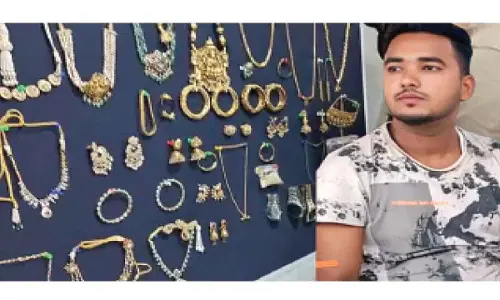Science and scientists in medieval India

A chain of madrasas, opened at several places, followed a set curriculum. The two brothers, Sheikh Abdullah and Sheikh Azizullah, who were specialists in rational science, headed the madrasas at Sambal and Agra. Apart from the talent available locally in the country, learned men from Arabia, Persia and Central Asia were also invited to take charge of education in madrasas.
As you know, the medieval period marks the coming of Muslims in India. By this time, the traditional indigenous classical learning had already received a setback. The pattern of education as prevalent in Arab countries was gradually adopted during this period. As a result, Maktabs and Madrasas came into existence. These institutions used to receive royal patronage

A chain of madrasas, opened at several places, followed a set curriculum. The two brothers, Sheikh Abdullah and Sheikh Azizullah, who were specialists in rational science, headed the madrasas at Sambal and Agra. Apart from the talent available locally in the country, learned men from Arabia, Persia and Central Asia were also invited to take charge of education in madrasas.
Muslim rulers attempted to reform the curriculum of primary schools. Some important subjects like Arithmetic, Mensuration, Geometry, Astronomy, Accountancy, Public Administration and Agriculture were included in the courses of studies for primary education.
Though special efforts were made by the ruler to carry out reforms in education, yet sciences did not make much headway. Efforts were made to seek a kind of synthesis between the Indian traditional scientific culture and the prevalent medieval approach to science in other countries.
Let us now see what developments took place in various fields during this period. Large workshops called karkhanas were maintained to supply provision, stores and equipments to royal household and government departments. The karkhanas not only worked as manufacturing agencies,
but also served as centres for technical and vocational training to young people. The karkhanas trained and turned out artisans and crafts persons in different branches, who later on set up their own independent karkhanas.
Mathematics
Several works in the field of Mathematics were produced during this period. Narayana Pandit, son of Narsimha Daivajna was well known for his works in Mathematics – Ganitakaumudi and Bijaganitavatamsa. Gangadhara, in Gujarat, wrote Lilavati Karamdipika, Suddhantadipika , and Lilavati Vyakhya.
These were famous treatises which gave rules for trigonometrical terms like sine, cosine tangent and cotangent. Nilakantha Somasutvan produced Tantrasamgraha, which also contains rules of trigonometrical functions. Ganesa Daivajna produced Buddhivilasini - a commentary on lilavati - containing a number of illustrations.
Krishna of the Valhalla family brought out Navankura on the Bijaganit of Bhaskara-II and elaboration of the rules of indeterminate equations of the first and second orders. Nilakantha Jyotirvida compiled Tajik, introducing a large number of Persian technical terms.
Faizi, at the behest of Akbar, translated Bhaskara’s Bijaganit. Akbar ordered to make Mathematics as a subject of study, among others in the education system . Naisiru’d –din-at –tusi, was another scholar of Mathematics.
Biology
Similarly, there were advancements in the field of Biology. Hamsadeva compiled a work in the field of Biology entitled Mrga-paksi-sastra in the thirteenth century. This gives a general, though not always scientific, account of some animals and birds of hunting. The Muslim kings, who were warriors and hunters, maintained a fleet of animals such as horses, dogs, cheetahs and falcons for hunting. Animals, both domesticated as well as wild, have been described.
Both Babur and Akbar, in spite of being busy in their political preoccupations and war, found time to study the work. Akbar had a special interest in producing good breeds of domestic animals like elephants and horses. Jahangir, in his work - Tuzuk-ijahangiri - recorded his observations and experiments on breeding and hybridization. .
He described about 36 species of animals. His court artists, specially, Mansur, produced elegant and accurate portraitures of animals. Some of these are still preserved in several museums and private collections. As a naturalist, Jahangir was also interested in the study of plants. His court artists have drawn around 57 plants in their floral portraitures.
Chemistry
An important application of Chemistry was in the production of paper. Kashmir, Sialkot, Zafarabad, Patna, Murshidabad, Ahmedabad, Aurangabad and Mysore became well known centres of paper production. The paper making technique was more or less the same throughout the country differing only in preparation of the pulp from different raw materials. The Mughals knew the technique of production of gunpowder and its use in gunnery, another application of Chemistry.
The Indian craftspersons learnt the technique in evolved suitable explosive composition. The work Sukraniti attributed to Sukracarya contains a description of how gunpowder can be prepared using saltpeter, sulphur and charcoal in different ratios for use in different types of guns..
The principal type of fire works included those which pierce through air, produce sparks of fire, blaze with various colours and end with explosion. The work Ain –I-akbari speaks of the regulation of the Perfume office of Akbar. The attar (perfume) of roses was a popular perfume, which is supposed to have been discovered by Nurjehan.
source: www.nios.ac.in















